Advantages and Disadvantages of Irrigation
The crucial component of the agricultural approach that regulates the amount of water trickling toward the roots of plants over a regular period is irrigation. It artificially provides water by fulfilling the requirement to protect crops' quick nutrition development. When there is a drought or no rain, people generally need a deluge (rain).
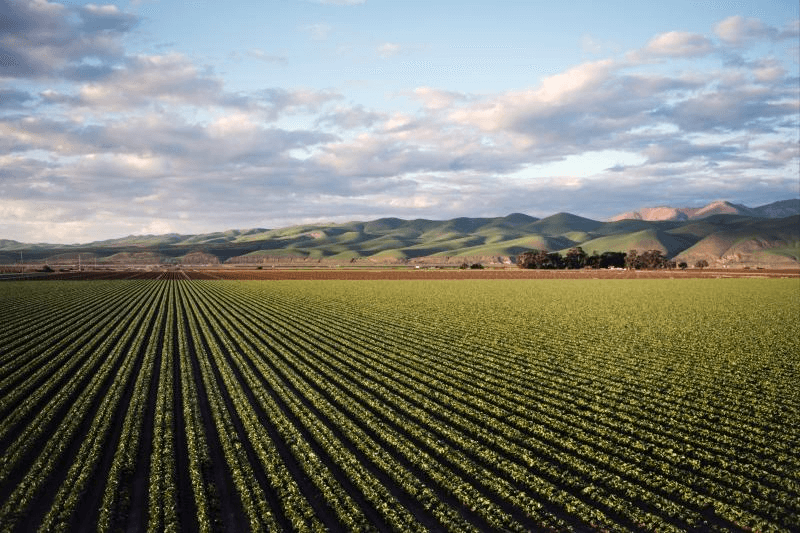
There are many different sources from which we can get irrigation water, including rivers, reservoirs, wells, canals, etc. Irrigation plays a crucial role in many agricultural countries, including chemical fertilizers, yield, industrial expansion, and socioeconomic stimulation. The present water reserves can irrigate 50% of the earth's surface.
Need for Water Irrigation System
Water irrigation is typically required due to the following circumstances:
- Rainfall is below what plants need in terms of water.
- While there is enough rainfall, it is distributed unevenly throughout the land as required.
- Although there is enough rainfall and a suitable geographical distribution, the timing of the rain could be better.
- Profound scientific advancement (HYV-High yield variety).
- The significance of irrigation
- Irrigation preserves soil moisture. For seeds to germinate, water is required.
- Water provides crops with two necessary components: oxygen and hydrogen.
- The plant's ability to absorb mineral nutrients from the soil depends on irrigation.
- It is crucial for the development of agricultural plant roots.
Irrigation Methods
There are two irrigation methods:
1. Traditional method
This is accomplished via the conventional system, in which the farmer must personally extract water from wells or canals or use livestock. There is only one benefit in that it is inexpensive.
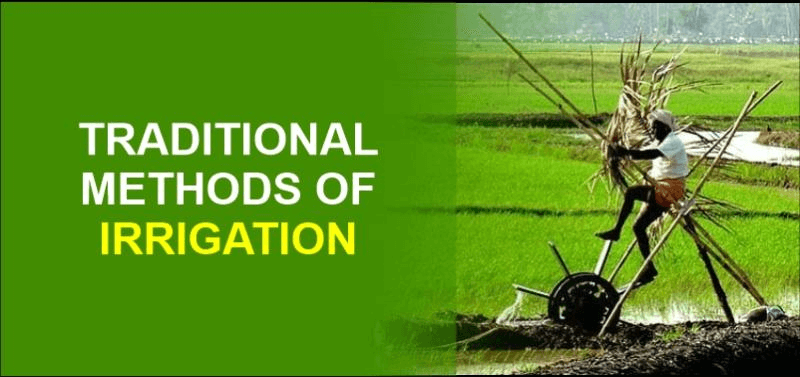
2. Modern methods
Two systems are used in modern irrigation. The sprinkler system is one, while the drip system is the other. The sprinkler system, which sprinkles water over the crops, promotes uniform moisture distribution.
Water is sprayed through nozzle pipes once the pump is linked to lines that provide pressure. A hose or pipe provides water drop by drop to the plant's roots utilizing the drip system.
Types of Irrigation
Several forms of irrigation are based on water distribution to plants concerning the soil, climate, or surface area. A plant needs a certain amount of water, which should be reasonable and should be identified(amount of water required).
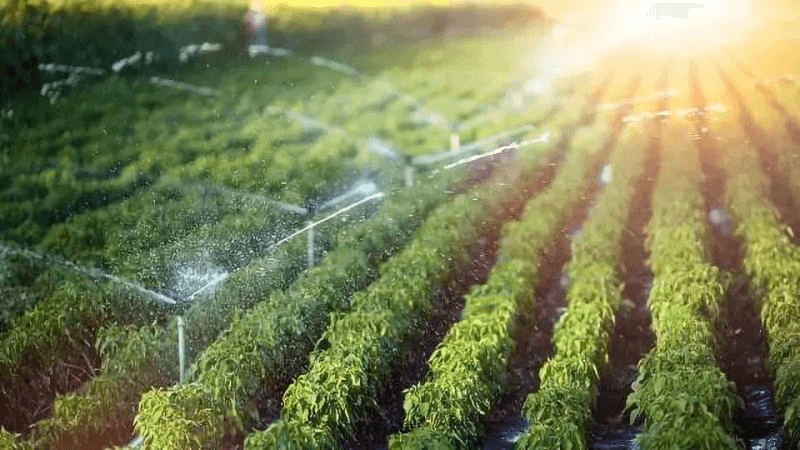
There are several forms of irrigation, depending on various needs:
- Sub-irrigation: Water is provided to the plant root zone during sub-irrigation, sometimes called seepage irrigation. The excess might be stored for later use.
- Surface irrigation: It is often referred to as gravity irrigation, and it is the earliest type of irrigation. In this method, water flows according to gravity or the terrain's slope.
- Drip Irrigation: Drop by drop, water is given to plant roots using a drip irrigation system. The most water-saving strategy is this one.
- Sprinkler irrigation: Also referred to as overhead irrigation, this technique involves mounting sprinklers or other spraying devices above a centrally located pipe.
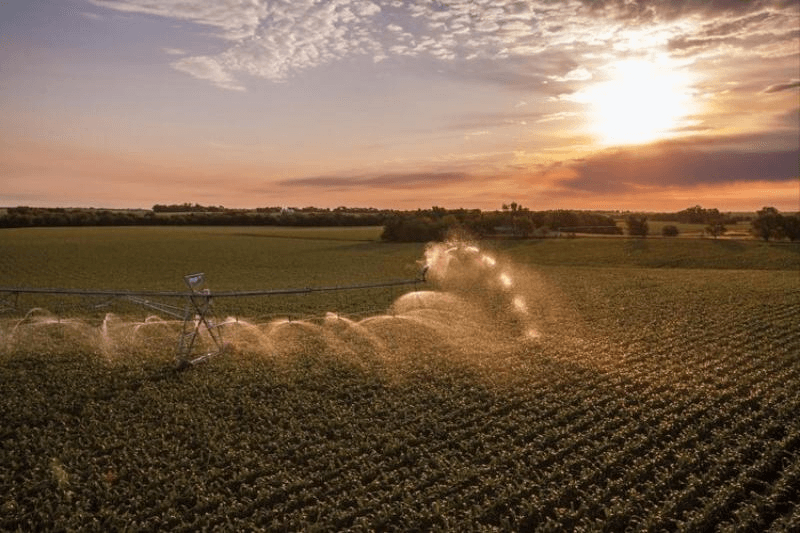
- Micro-irrigation: It is also known as localized irrigation, a technique in which water is given to each plant or the area around it via a pipe at low pressure.
- Water wheel irrigation: Also known as centre-pivot irrigation, it involves feeding water to the plants from the pivot point in the middle of an arc in a circular pattern.
- Lawn sprinkler system: This system has a capacity water source and one or more zones, limiting its size. These sprinklers are permanently fixed and are typically utilized on home lawns, business property, schools, golf courses, etc.
Irrigation Advantages
- Insufficient rainfall will make it challenging to meet the need for water. The shortfall brought on by inadequate rainfall is attempted to be overcome via irrigation. In drought years, irrigation therefore helps.
- Crop yields are increased, and irrigation increases local livelihoods. Thus, the people's quality of life is raised.
- Additionally, irrigation increases the nation's wealth in two ways. Irrigation firstly makes the country self-sufficient in food needs by producing abundant harvests. Second, the revenue increases because irrigation is taxed when provided to the producers.
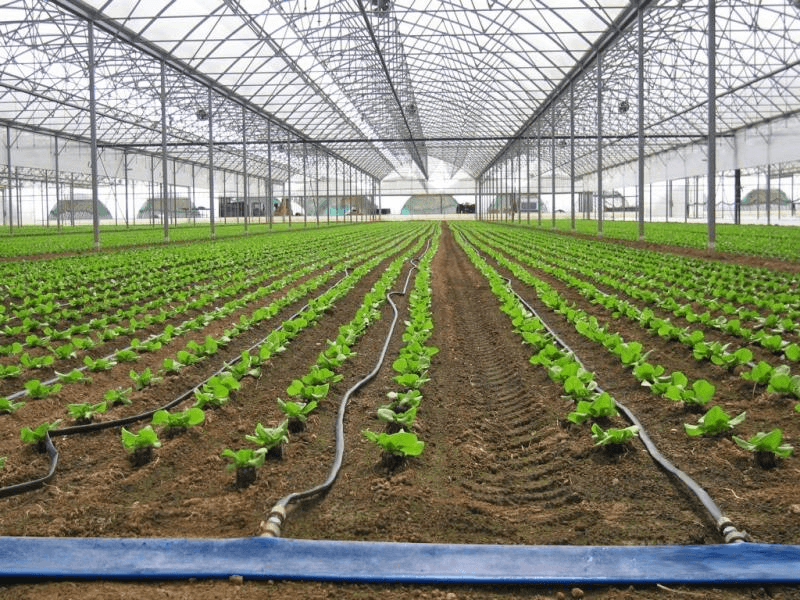
- With irrigation, farmers may plant cash crops that yield higher returns than the regular crops they could have produced without irrigation. The cash crops include potatoes, tobacco, sugarcane, and fruit gardens.
- Large irrigation channels may occasionally be utilized for communication.
- A hydroelectric power plant might be built using the falls that intersect irrigation channels.
- It is essential to consider the domestic benefits. Improved freshwater circulation and easier access to it are two benefits of irrigation.
- As water lost through seepage increases groundwater storage, irrigation increases it.
- Planting may be done effectively along the banks of substantial irrigation channels, which not only aids in introducing social forestry but also enhances the environmental condition of the area.
- When there are natural disasters, new irrigation projects are developed to give big population jobs. These projects are referred to as relief or disaster works.
- The value of dry land increases when irrigation facilities are made available.
Irrigation Disadvantages
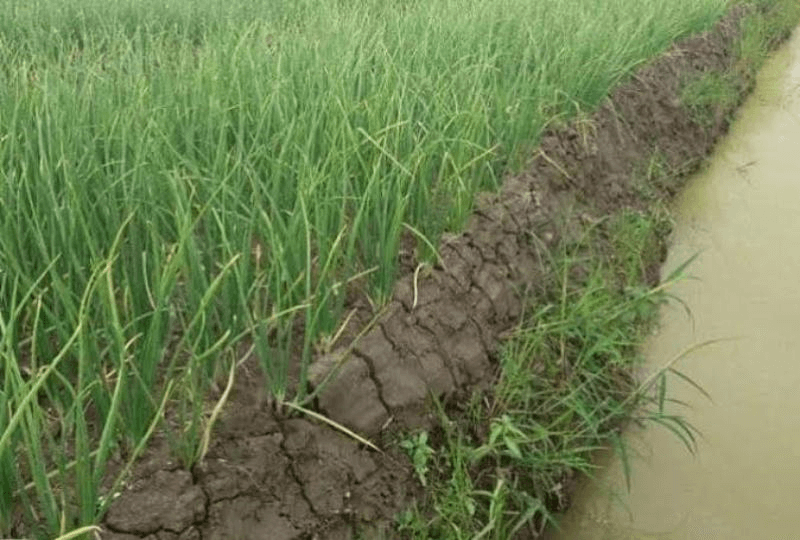
- Along the canals, marshes and ponds are created by excessive seepage and leaking of water. Over time, the ponds and marshes turn into mosquito breeding grounds, giving birth to diseases like malaria.
- The water table rises from excessive spills into the ground, totally saturating the crop root zone and it causes the region to get waterlogged.
- Due to the irrigation water present reduces the temperature & makes the area wet.
- Valuable industrial and residential land is lost due to irrigation canal systems.
- Because the initial cost of an irrigation project is so expensive, growers must pay higher taxes in the form of charges.
- During the rainy season, irrigation projects restrict the free flow of water, which causes standing crops or even villages to be flooded.
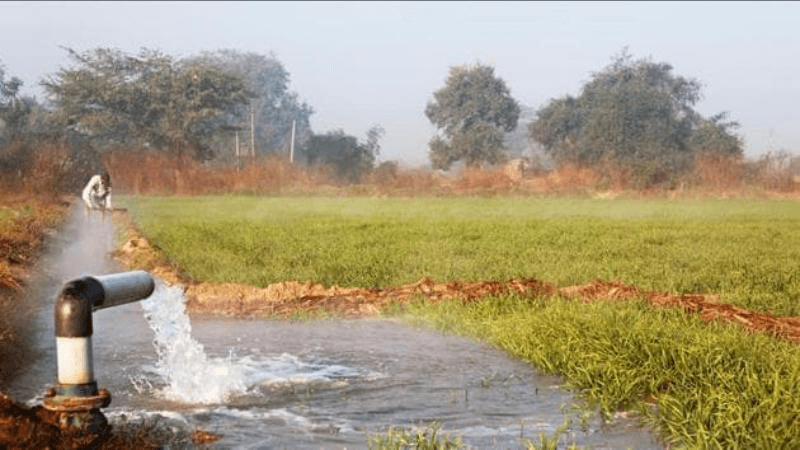
| Advantages |
Disadvantages |
| Helpful in areas with little rain |
Costly initial process |
| Increases agricultural output |
Water overflow can raise the risk of waterborne illnesses |
| Enables the cultivation of cash crops |
Loss of property and habitation are potential consequences |
| Eliminate starvation and deforestation |
Drainage issues may arise during the monsoon |
| Can aid in the generation of hydroelectric power |
It makes the area moist |
| Enhances the storage of groundwater |
Wind is favourable |
|





 For Videos Join Our Youtube Channel: Join Now
For Videos Join Our Youtube Channel: Join Now











